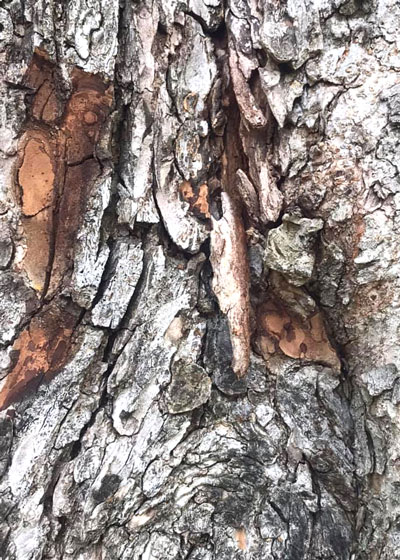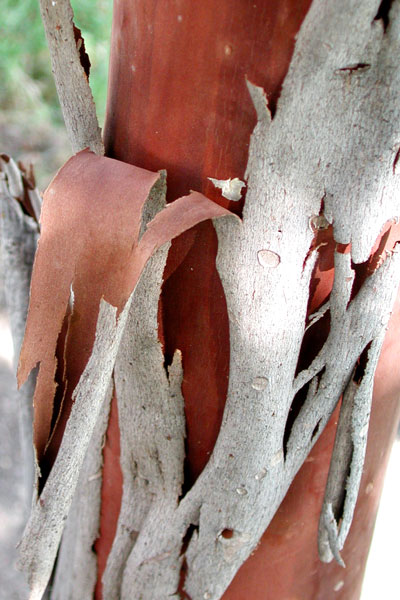Question of the Week – Number 2: April 2, 2020
“Why are pieces of bark falling off my tree?”
This is a common tree question that gardeners ask. The answer will probably make sense once I explain it.

Bark is a dead tissue. It serves to protect the live tissues (phloem and cambium) that are just inside.
As a tree’s trunk expands, usually with a burst of new growth in the spring, the bark cannot expand with it. I liken it to dipping a partially filled balloon in a big vat of mud. Let the mud dry, then blow the balloon up the rest of the way. Since the mud has no elasticity, all it can do is crack and pop off.
Bingo: tree bark behaves the very same way.
Is it symptomatic of any kind of trouble for the tree? Not unless you’re seeing bare wood or dead, cracked wood beneath where the bark used to be. Odds are, instead, that you’ll see new bark already starting to form.
No harm. No foul. No call to action.

I can take this to an extreme. Think about sycamores, birch, and even crape myrtles. They shed bark in huge sheets. It’s just part of their lives and we think nothing of it.
Have a great day!
